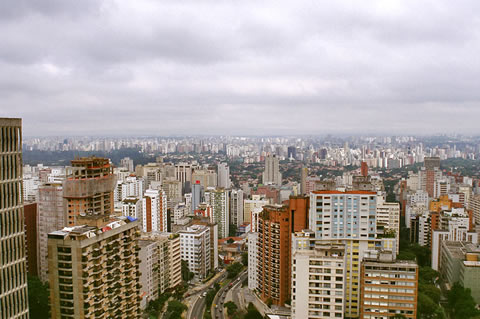The year 2009 marked a watershed moment: for the first time in history, half the world’s population lived in cities. But while global urbanization is often associated with vast mega-cities such as Tokyo, Cairo and São Paolo, a majority of the world’s city-dwellers actually live in compact metropolitan areas with fewer than 500,000 residents.
In developed nations, many cities now function as economic hothouses, bringing together high concentrations of expertise, capital and entrepreneurs. A World Bank study in 2006 noted that different-sized cities often specialize – in pharmaceuticals or post-secondary education, for example – or act as a transportation hub or financial centre. At the same time, growing urbanization in developing nations is exacerbating problems of poverty, congestion and pollution. Even wealthy cities increasingly suffer from a widening gap between the very rich and the very poor. The upshot is that local governments will become ever more crucial players in global affairs, perhaps even eclipsing their regional or national counterparts.
With this ongoing shift, says Patricia McCarney, a development expert at the Munk School of Global Affairs, city officials worldwide are anxious to learn how their counterparts elsewhere deliver vital local services, from water treatment to transit, policing and garbage collection. By exchanging knowledge about best practices, she says, cities can improve their quality of life and attractiveness to international investors.
It was this sort of thinking that led to the creation of the Global City Indicators Facility, a database of comparable statistics that allow cities to track their effectiveness on everything from planning and economic growth to transportation, safety and education. The project has the backing of the World Bank, whose officials have pushed for more reliable data to support its lending in heavily urbanized regions, such as Latin America.
Two years after the launch of the Global City facility, McCarney’s team tracks more than 100 indicators and has signed up 125 cities of all sizes and from every part of the world, from Dallas to Kabul. McCarney – who travels extensively to promote the project – is aiming to reach the 1,000-city mark in time for Milan’s 2015 Expo on sustainable development.
The project has posed all sorts of methodological challenges, not least of which is settling on a precise definition of the term “city.” Metropolitan areas and urban agglomerations, especially those experiencing high growth, tend to spill over political boundaries. McCarney says her group chose to focus solely on municipal statistics that correspond to existing municipal boundaries. For large cities, they have formulated a way of aggregating data across a region to build indicators that apply to sprawling urban areas, such as Greater Toronto.
Each year, Global City publishes a statistical compendium, which is distributed to the members, as well as to the project’s funders. “Good, comparable data on cities didn’t exist until now,” says McCarney, patting the latest volume with a satisfied grin. “This is a first.”
The index is a boon to international development agencies, urban researchers and businesses looking to set up new facilities. McCarney notes that some municipalities also use the data to counter much-hyped but less rigorous city rankings, which may provide misleading snapshots about what some cities have to offer. But she observes her index’s most meaningful benefit is that it provides members with a forum to exchange ideas on how cities can function. “The exciting part is that the cities themselves have started to build a network,” she says, “and Toronto is now at the hub.”






